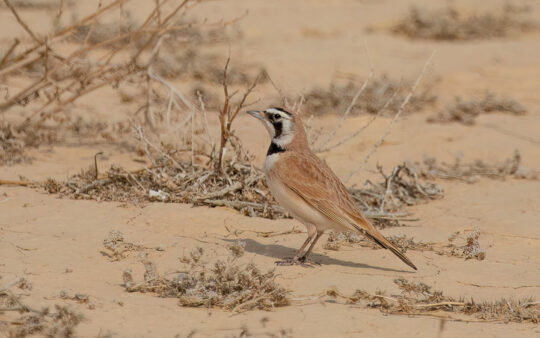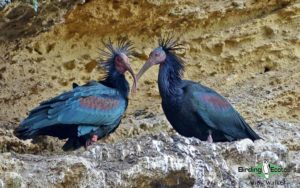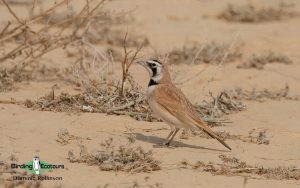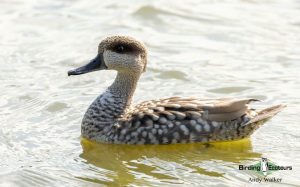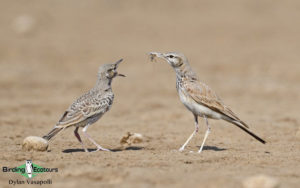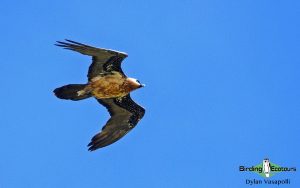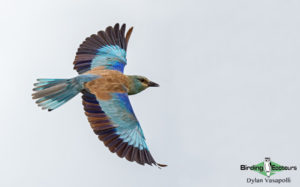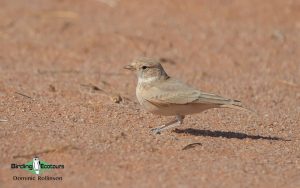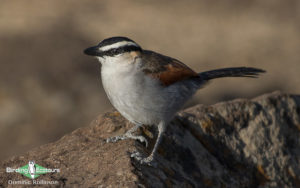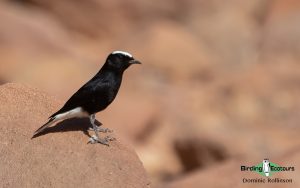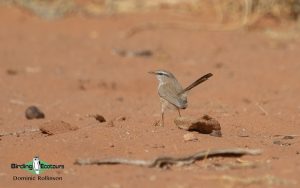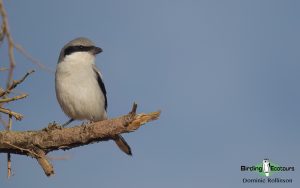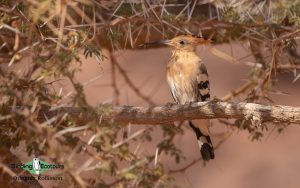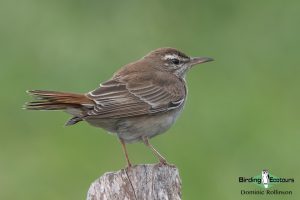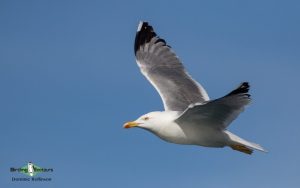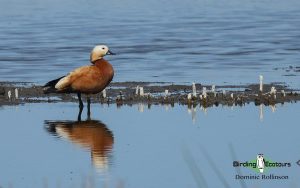Morocco Birding Tours
The Kingdom of Morocco (“Morocco” hereafter) is an underappreciated jewel for bird watching and a Morocco birding tour should feature high on your wish list of birding tours. As tour operators, we are really excited to introduce our Morocco birding tours, find out why below.
Stretching along the northwest corner of Africa, its position, history, culture, and geography make it a land of contrast and experience. Morocco’s capital, Rabat, sits on the Atlantic coastline and has a population of around 500,000 people, while the most populous and famous city, is Casablanca, home to 3.3 million people. In total around 36.5 million people live in Morocco, across an area a little larger than the US state of Texas. Morocco shares land borders with Mauritania (via Morocco’s claim to Western Sahara), Algeria and Spain (via the Spanish overseas territories). Its west coast borders the Atlantic Ocean while its north borders the Alboran Sea (the westernmost section of the Mediterranean Sea) and the world-famous Straits of Gibraltar, one of the top bird migration hotspots in Europe.
Read More About Morocco
The Moroccan state was formed in 768 AD by Arab Muslims and lasted until the 11th century when the Berber tribes took control of the country. Later, Portugal, Spain and England held territories in the country. Morocco was unified in 1631 and eventually drove out all foreign nations, however in the 19th century Europe’s industrialization led to interest in Morocco, it was then that the Spanish territory of Cueta was formed. Then in the early part of the 20th century Spain increased its share in Morocco and France also held large parts of the country. In 1957, after years of political wrangling, Morocco finally became independent, once more, under the rule of Sultan Mohammed.
The geography of Morocco is dominated by the vast Rif and Atlas mountain ranges and, of course, the world-famous Sahara Desert. The Rif Mountains form the tip of North Africa and are an extension of the Baetic mountain system of southern Spain. The area is surprisingly wet and as such is covered in lush forests, home to the Critically Endangered Barbary Macaque. The vast Atlas Mountains stretch across North Africa for 1,600 miles (2,500 kilometers), one of its peaks Toubkal is the highest mountain in Morocco at 13,671 feet (4,167 meters). Snowfall is regular in this range, despite its more southerly position in Morocco. Finally, the Sahara Desert makes up the southeastern part of Morocco. Its massive size and staggering temperature variations providing a huge obstacle for the millions of migrating birds moving between Europe and West Africa.
Following International Ornithological Congress (IOC) taxonomy (v10.2 in October 2020) the bird list of Morocco stands at 509 bird species, with 34 of these being globally threatened. Morocco has one intriguing breeding endemic species, the incredibly rare, impossibly ugly, and Endangered (BirdLife International) Northern Bald Ibis, though there is some ambiguity to this, as a population of what was considered to be this species has recently been discovered breeding much further east (e.g. in Syria). However, the birds in Syria appear to be migratory (to Ethiopia), whereas the birds in Morocco are sedentary, so it is possible they may actually be different species. A breeding and reintroduction project is underway for the species in southern Spain. One of the most important sites for the species in Morocco is the Souss Massa National Park (which includes the famous Oued Massa River). The national park is home to three of the four world’s known Northern Bald Ibis breeding colonies. BirdLife International recognize this area as an Important Bird Area (IBA), one of 49 IBAs in the country. During our tour we will visit several other IBAs, such as when we bird at Erg Chebbi, which is part of the Merzouga/Tamezgidat IBA.
Morocco has numerous highly sought-after regional endemics that are easier to find here than elsewhere, these specialties will form the focus of our tour. Spring migration will be in full flow and will provide an additional bonus spectacle too.
Our Morocco birding tour highlights include Levaillant’s Woodpecker, Houbara Bustard, Tristram’s Warbler, Moussier’s Redstart, Streaked Scrub Warbler (a monotypic family), and of course the aforementioned Northern Bald Ibis providing the icing on the cake! Other targets include Barbary Partridge, Marbled Duck, Ferruginous Duck, Cream-colored Courser, White Stork, Audouin’s Gull, West African Crested Tern, Baillon’s Crake, Great Spotted Cuckoo, Egyptian Nightjar, White-rumped Swift, Pharaoh Eagle-Owl, Maghreb Owl, Marsh Owl, Alpine Chough, four sandgrouse species, numerous birds of prey, such as Bearded Vulture (Lammergeier), Bonelli’s Eagle, Dark Chanting Goshawk, Long-legged Buzzard, and Lanner Falcon. European and Blue-cheeked Bee-eaters will fill the days with color while the trip will be dominated by a wide range of exciting passerines, including Black-crowned Tchagra, Maghreb Magpie, African Blue Tit, Greater Hoopoe-Lark, Thick-billed Lark, Desert Lark, Bar-tailed Lark, Maghreb Lark, Dunn’s Lark, Black-crowned Sparrow-Lark, Cricket Warbler, African Desert Warbler, Fulvous Babbler, Rufous-tailed Scrub Robin, Atlas Pied Flycatcher, Desert Wheatear, Red-rumped Wheatear, White-crowned Wheatear, Mourning Wheatear, White-throated Dipper, Desert Sparrow, Alpine Accentor, African Crimson-winged Finch, and Trumpeter Finch. Full tour details can be found here.
One bird that we will keep dreaming about seeing is the Critically Endangered, and most-likely extinct Slender-billed Curlew, this species previously over-wintered in Morocco but has not been seen for many years now.
The birds of Morocco obviously make up an important part of our tour but so does the incredible culture, food, landscapes, and climate. Come and take a look for yourselves, we are sure you will be enthralled by this special corner of North Africa.
Download Morocco Itineraries
Birding Tour Morocco: Best of Northwest Africa March 2026/2027
